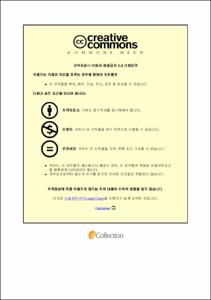관광목적지 부산방문 외래관광객 수요예측에 관한 연구
- Abstract
- This study is intended to look into the demand forecast of Busan tourism by Jenkins(1976)'s ARIMA(Autoregressive Intergrated Moving Average) method used in previous studies. The findings are as follows.
First, the accuracy of forecast analysis showed that the accuracy of forecast was high, along with the existing previous studies.
Second, time series analysis for the demand forecast of Busan tourism through 2009 to 2015 by the classification of Busan visiting tourists into foreigners and Japanese showed that ARIMA(0,1,4)(0,1,0) and ARIMA(0,1,0)(0,1,1) models were finally selected for foreigners and Japanese, respectively, through the phase of stationarity, model identification and parameter estimation. These three models had a high explanation power of 82.4% and 78.0% and were estimated at relatively low BIC and Q-statistics. Since all three models were greater than 0.05, they all had an independent white noise, indicating that forecast models were appropriate.
Third, the demand forecast of foreign tourists in Busan area showed that the demand for them would decline consistently. A monthly demand of them was forecast to be the highest in August, followed by in October, May, April and June, but it was forecast to be the lowest in January and February.
Fourth, there were 2,966,000 foreign tourists who visited Busan in 2016, an increase of 41.9% from 2015(2,090,000 persons), and there were 939,000 Chinese tourists who visited Busan in 2016, an increase of 70.1% from a year ago(552,000 persons). But the increase can be attributed to a recovery in the number of Chinese tourists who were sharply reduced in Busan due to the MERS situation in 2015.
Overall, the demand forecast of Busan tourism for foreign tourists through ARIMA models was in good agreement with the actual value. The influence of events such as SARS in 2016 or Dokdo dispute with Japan was an impediment factor that drastically reduces the demand for Busan tourism.
By contrast, however, the number of Japanese tourists visiting Korea was increased due to the influence of Korean Wave, which has become an important issue in the Japanese tourist market. This suggests that the number of tourists visiting Korea can dramatically depend on the continuation of the Korean Wave effect. Consequently, the Korean Wave can be an important factor in the policy for Japanese tourists visiting Korea tourists in the future.
- Issued Date
- 2018
- Awarded Date
- 2018.2
- Type
- Dissertation
- Publisher
- 부경대학교
- Affiliation
- 부경대학교 경영대학원
- Department
- 경영대학원 관광경영학과
- Advisor
- 양위주
- Table Of Contents
- Ⅰ. 서 론 1
1. 연구배경 및 필요성 1
2. 연구의 목적 3
3. 연구범위 및 구성 체계 3
Ⅱ. 외래 관광객 수요예측에 관한 이론적 배경 5
1. 수요예측에 대한 개념 5
2. 관광수요예측에 대한 연구 6
3. ARIMA모형의 본 연구에의 적용 7
Ⅲ. 연구 방법 설계 9
1. 분석 절차 9
2. 분석자료의 개요와 분석기법 10
Ⅳ. 분석결과 13
1. 정상성 및 계절성 존재여부 13
2. 모형 식별 16
3. 모형진단 및 검증 21
4. 예측분석 25
Ⅴ. 결 론 27
1. 요약 및 결론 27
2. 연구의 한계 및 향후 연구과제 29
참고문헌 30
- Degree
- Master
- Files in This Item:
-
-
Download
 관광목적지 부산방문 외래관광객 수요예측에 관한 연구.pdf
기타 데이터 / 1.21 MB / Adobe PDF
관광목적지 부산방문 외래관광객 수요예측에 관한 연구.pdf
기타 데이터 / 1.21 MB / Adobe PDF
-
Items in Repository are protected by copyright, with all rights reserved, unless otherwise indicated.